There are certain segments of abandoned carts where you can offer discounts with the fewest tradeoffs (TL;DR, non-customer leads), so here’s 3 major coupon strategies to align your overall marketing goals.
“Miss Mencken, coupons work.” – Don Draper, Mad Men
After ruling out every other possible risk reversal and value-added alternative, sometimes that discount is the most effective way to get a lead to risk their money on a company they’ve never bought from.
Remember, this abandoned shopper’s context is that they're likely at the Lead Decision stage and have already made up 90% of their mind with your product. Now they just need you to offer your hand once more to build their trust to step forward.
Let’s talk about the types of coupon offers you could utilize in this Abandoned Cart email series for non-customers. The discounts you use depend on the long-term marketing goals that best align with your business.
I’m kind of ranking these according to difficulty of implementation:
- Just Close The Sale (%/$-off discount)
- Maintain Perceived Value (free shipping or bonus)
- Raising Basket Size (increase AOV, buy X get 1 free)
Static vs One-Time Generated Coupons
One-time use coupon generation keeps your great coupons off of sharable sites like RetailMeNot, creates urgency around the expiration date, you can personalize the offer by putting the customer’s first name into the code.
But coupon generation can be complicated to implement, and the specific coupon generator you use might not have the features and settings you need.
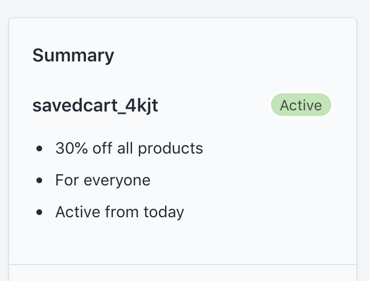
Like the example above, I’d recommend creating a static coupon code in your shopping cart that LOOKS like it could be one-time generated.
This means that you can get the first version of your Abandoned Cart coupon series launched quickly, without being hampered by technology.
Static Coupon Tips for Abandoned Cart Emails
Here's my recommendations to make the static coupon code simple and actionable:
- Embed a Marketing Phrase: Embed a phrase into the coupon text to gives the shopper context for where they're at and why you're helping them with the discount (popular phases I've seen used for Abandon coupon codes include "savedcart", "gotyourback", and "finishcheckout")
- Do NOT Mix Caps and Lowercase: This mix may make customers believe the coupon is case-sensitive, which may make them waste time checking capitalization and harm conversions (if your phrase isn't readable as one phrase, then either change your marketing phrase or separate it with hyphens/underscores).
- Testing All-Caps Coupons: I prefer the look of all-caps coupons because it's more easily readable and stands out in the body of the email as a call to action (SAVEDCART_4KJT vs savedcart_4kjt) but you need to test the effectiveness of this per the previous bullet. (If a larger portion of customers believe they need to capitalize every single character then this may harm your overall conversions because they don't want to take the effort.)
- Keep the Coupon Phrase Unique: Make sure you do NOT use this phrase in any of your other lifecycle stage marketing. The coupon reporting, in itself, should tell a story about the effectiveness of your marketing (and the discount budget you're "paying" to acquire customers). We worked with a client who would use the same "NEWLEAD" coupon code across all of their popup, newsletter signup, and abandoned cart campaigns and it made it impossible to determine which lifecycle campaign was responsible for the sale.
- Separate with Underscores Instead of Hyphens: You'll add in a string of random characters that look generated, but you should visually separate that from the marketing phrase for readability. Although underscores aren't recommended for URL's and SEO, there's one key advantage of formatting coupons as savedcart_4kjt rather than savedcart-4kjt: easy copy-paste selection. When you double click on a desktop, a code with an underscore will select the entire code, while the hyphen will require a drag selection, which can, again, harm conversions. You don't get this advantage for mobile shoppers but it can be helpful for desktop conversions (you can try this by selecting those two codes, above)
- Avoid Easily Confusable Characters in the Generated Section: Since a shopper can't guess the random character string, there's certain easily confused characters that you need to avoid in coupon codes. This is more true of lowercase letters, depending on the font. I'd avoid these characters: I/i, l("el")/1("one"), o("oh")/0("zero"), etc. This article gives more examples.
- State An Implied Expiration Timeframe: Even though this code is being generated without an expiration code, your emails need to make it clear that this offer won't be around in perpetuity. Something like, "This is our final reminder while this coupon is still active" could send the message. This creates some urgency and protects your business. Even if you keep this particular coupon active for months, it's better to set this precedent for when you need to change it.
- [Advanced] Apply the Code by Clicking a Button: Much more advanced to implement, but it will eliminate sales friction if you can simply apply the coupon code when shoppers click the button in the abandoned email. When the button can accurately say "Apply Code and Finish Checkout" then it makes the process that much easier for them to buy. (here's a Shopify article on applying coupon codes through a URL link structure, and I've used this for clients and it works wonderfully)
- Clearly State The Coupon Benefit (and Terms): This is simple but easily forgotten. Before you present the code you want to clearly present ALL the high level things they'll get out of this deal, then state any asterisk fine print after the CTA button. For example, "take $25 off all Jewelry*" with the terms below "*Applies to items in the Jewelry collection with orders totaling $75 or more. Offer expires in one week." (I've included a screenshot because this is best explained visually)
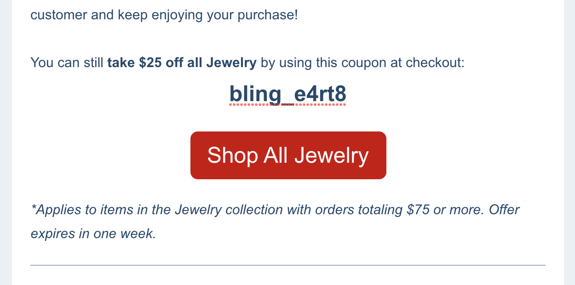
Swapping Out Static Coupons in Automatic Emails
Keep an eye out for codes being shared on RetailMeNot by occasionally checking coupon sites, or by checking customers who use this coupon against whether they were actually enrolled into the email campaign that sends it.
The random characters should help to make it appear generated, but after enough time and shopper interaction the code might get shared on coupon sites.
Here's the steps for replacing this code with a new one:
- Create the New Static Code in Your Cart: Same specs as the current code without an expiration. Only the code text is different. (for example, savedcart_6p2sw instead of savedcart_4kjt)
- Replace This Code in All Abandoned Cart Emails: Now the live emails that are sent out will contain your new code. If someone got the old code in email 2 but the new code in email 3, that's alright. You'll give them enough time to use either to not raise complaints
- Determine an Expiration Timeline for Existing Recipients: If your current abandoned cart emails happens over 4 days and you want to give shoppers 10 days before the code expires, then you need to give the maximum of 14 days before the old code stops working. After all, you warned them in the emails that the code wouldn't be active forever.
- Add an Expiration Date on the Old Coupon: Update the old code with an expiration date. You shouldn't need to do anything else except just let this code expire. You've set a good precedent in the email so there should be few customer service complaints.
Strategy 1: Just Close The Sale (%/$-off discount)
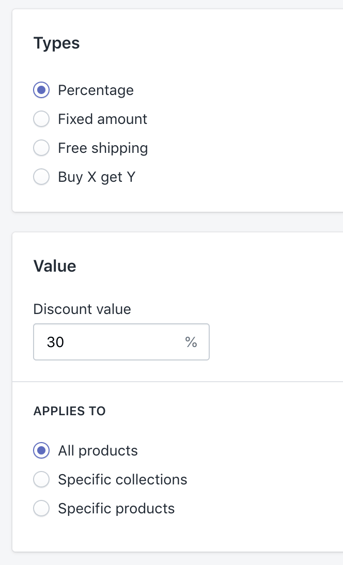
This is the simplest discount for the customer to understand and emotionally process so that they can take action.
The goal of this strategy type is to simply close the sale. You're ignoring regards for protecting your product margins, basket size, and perceived product value in order to do what it takes to get an order.
The other two strategies will require the customers (or you as a business owner) to do a bit more planning. But a standard 15% off or $20 off the entire cart is an easily grasped way to close an abandoned cart sale.
A word of caution when using a Fixed Amount discount of $20 or $50 is to make sure you set a minimum purchase amount on the cart, and then clarifying that in the email fine print. (I've worked with a lot of clients who've actually neglected to apply this so it bears mentioning so you don't accidentally getting a bunch of $3 orders to buy your cheapest products.)
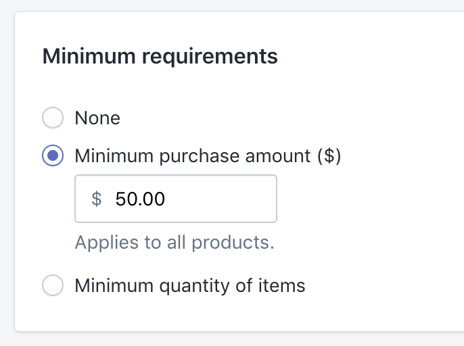
A common question is whether a % off or $ off is more effective. This is actually more a matter of emotional impact and the feeling your customers get than one of simple math.
If your average order value is such that 20% off and $40 would be the exact same discount amount, one discount type will likely "feel" better to your customers than the other one. They'll instinctively feel like they're getting a better deal, even if they do a math and realize it's the same.
If you've never experimented around which discount types works better for your customers, then you can split test two different versions of this content or just take a guess for now and change it later.
A simple "Buy One Get One" coupon would also fall into this strategy of getting the sale closed, since you're basically setting the precedent of selling your products for half price. (In Shopify, you can accomplish this through their default "Buy X Get Y" coupon or specific apps like Discount Ninja and Discounted Upsells‑ Cross Sell which offer more control)
This might close the sale but it also might develop a habit for the customer of only waiting for these kinds of sales to come around before buying again. This risk is true of simple BOGO, % Off, and $ Off coupons.
Strategy 2: Maintain Perceived Value (free shipping or bonus)
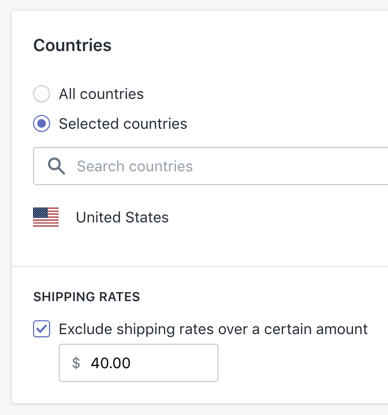
Free shipping, free tax, or a free ancillary product that basically costs you nothing are all effective uses of this strategy.
The goal of this strategy is to reduce the price of the order but without affecting the price and perceived value of the core product.
You're discounting around your core product, but not the product, itself. This sets an easier precedent for getting full price on the customer's second order since you didn't lead with a straight %/$ discount on your main offering.
Since Amazon has created the expectation that shipping is free and fast, I would try to offer free shipping by default to remove friction. However, I understand that weight or customs fees can make this impractical for some businesses and that's where this coupon type can close the sale. (If you're a Unific and HubSpot user, then you can also use the Total Value of Abandoned Cart property to only send this free shipping offer to abandoned carts above a certain value)
You can also give free sales tax. Shopify doesn't have a native coupon type for this so you could just create a 10% discount code like free_national_salestax_9jr52 and tell a story around how you wanted to put it high enough to cover anyone's sales tax in the entire country. Sure, it's just a 10% discount code, but now you're wrapping it in a special story that doesn't appear to discount the product, itself.
Finally, you can use a coupon code that gives a free ancillary product bonus to a customer making a purchase. In Shopify you can use the "Customer Gets" section of a "Buy X get Y" coupon to deliver the specific product that's basically free to you.
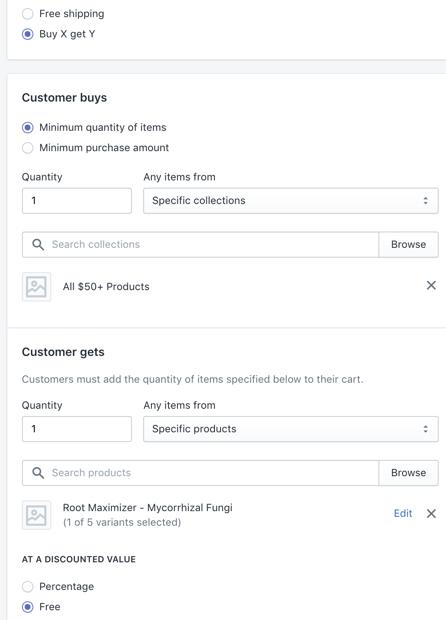
You don't want to have to specify a particular product or collection the customer has to buy before getting the product bonus. Since Shopify doesn't natively have an "All Products" collection, you'll quickly make a collection using a condition of "Product price is greater than $50" as shown below, or some criteria to that effect (make sure you turn off the default channel visibility in the top right when you create it: this is a "behind the scenes"-only collection):
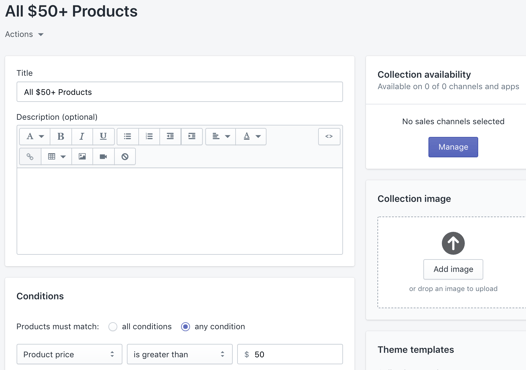
Besides low-cost ancillary products, other good candidates for the "free bonus" coupon type are lower priced 3rd party products you resell, so as to show you giving away a 3rd party's product and not diminishing the value of the products you make in-house.
These are methods to stay out of competing in the "low price leader" game.
Strategy 3: Raising Basket Size (increase AOV, buy X get 1 free)
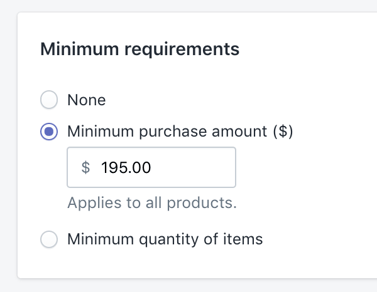
Giving discounts to customers who will spend above your typical order amount and "Buy X Get 1 Free" offers are good examples of this strategy.
The goal of this strategy is to make a customer comfortable with spending more with you. Even if the per-product price is lower you're establishing the precedent that this requires a larger overall purchase, almost like a mini-wholesale customer.
The first step is to do an analysis to figure out your customers' average/median First Order Value and discount amount (by dividing Total Value of Discounts by Total Value of Orders). Most carts show Average Order Value, but it's harder to get the average/median value of the first order, specifically.
Since it's the first order you're trying to close with this campaign you need to get those specific numbers, and Unific can provide these properties in our integration with HubSpot's free tools.
This will give you a baseline order value that you need customers to hit on their first purchase if you want to have a positive effect on your sales, and the discount percentage will show you what you're currently paying for your lifetime sales relationships.
You then set up the coupon's minimum required cart value to be this price, plus whatever your discount will be. (In Shopify this is the price before the discount is applied, not afterwards)
The specific "Buy X Get 1 Free" setup is similar to before (along with the Shopify native, Discount Ninja, and Discounted Upsells implementation articles) but the strategic difference is that you're only interested in closing the sale if it gets you an overall revenue amount that's higher than your average order value for first purchases.
This takes a much better understanding of your data and who is buying from you, using your own analysis or a tool like our SegLogic. You might find that certain products or collections are more conducive to this kind of AOV-raising promotion.
If you have the analysis, then I would recommend initially testing this sort of offer on carts where the Total Value of Abandoned Cart is above the average first order value. This would mean that they'd be getting a slight discount when offering the coupon rather than raising the overall price of the cart (so you're basically using Strategy 1 on a group with higher cart values just to close the sale).
But since the closed amount would still be above your average first order value then it's still a gain for your business and you may find this strategy is worth preserving even for the high cart value sub-group. I've had this happen with clients I've worked with.
Strategy Summary (TL;DR)
Because 70% of carts get abandoned and over 50% of sales come from one-time buyers, you can make so many incremental improvements to your growth by optimizing your abandoned cart emails to non-customer leads.
If coupons is a current part of your strategy or one that you want to test with, the segment of non-customer abandoned carts is probably the most important testing ground for success. (If you're on HubSpot and haven't launched an Abandoned Cart campaign, we sell a template containing a basic, single-segment version, which should take less than 1-2 hours to customize and launch)
- Static vs One-Time Generated Coupons: Make static codes in your cart without expiration to launch a campaign, faster
- Abandoned Static Coupon Tips: There are many ways to present the code to increase your chances of conversion
- Swapping Out Static Coupons in Automatic Emails: If your static coupon gets spread around the public, there's quick ways to swap it out
- Top 3 Abandoned Cart Coupon Strategies: Each strategy depends on your methods for nurturing long-term relationships with your best customers
- Just Close The Sale: %/$-off discount are easy to understand and close quick sales
- Maintain Perceived Value: Free shipping or bonus offers discount around your core product without diminishing its value
- Raising Basket Size: Treat customers like mini-wholesalers and be comfortable with lower per-unit prices when their overall purchase is significantly larger
Get a Free Customer Journey Analysis!
Identify actionable differences in your ecommerce customer behavior to focus your marketing efforts.

